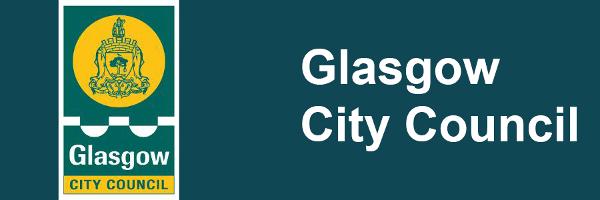Update on Glasgow's City Centre Recovery Plan
Published: 18 April 2023
An update on the City Centre Recovery Plan (CCRP) for Glasgow was given to a council committee today (18 April), outlining what has been done to help the area recover from the pandemic over the last couple of years.

The plan, developed and established in 2021, will cover the 2022-24 period, and has featured a wide range of short- and long-term actions to deliver the city centre recovery. The CCRP followed the establishment of the City Centre Task Force - an early response to the pandemic - and has guided the interim response to the very specific issues that meant that Glasgow city centre suffered disproportionately from the pandemic's impact.
There were four main objectives of the CCRP:
- Maximising activity and footfall
- Maximising employment and business development opportunities
- Maintaining and enhancing the city centre so that it attracts people to work, live, visit, study and invest there
- Embed climate mitigation and adaptation from the Climate Plan at every opportunity
One of the actions of the CCRP has been the development of a new real-time open data dashboard for the city centre showing general and sector-specific activity (available at the Glasgow Chamber of Commerce website). Selected information from the dashboard includes:
- Weekday footfall remains an issue with the slow return rate of office workers to Glasgow city centre (half of the national average) although weekend and night-time footfall is strong (101% and 130% of pre-Covid levels);
- In terms of sales in December 2022: sales in Glasgow city centre were 15% ahead of the same month in 2019, slightly ahead of Manchester (13%) and substantially ahead of Edinburgh (6%) and Leeds (6%);
- Sales were up 30% compared to December 2021;
- Sales performance continues to follow previous trends where recovery is being led by food and drink (+54%) rather than traditional retail activity (i.e. general retail was 25% down); and
- Although sales have increased, businesses are facing rising cost pressures so this does not necessarily translate to increased profitability.
The work of the CCRP and the City Centre Task Force has helped to attract Scottish Government grant funding for a number of projects, including six area action plans focusing on areas of high footfall and transport hubs at Sauchiehall Street, Argyle Street, Anderston Cross, Buchanan Bus Station, Heilanman's Umbrella, and High Street.
This grant funding has also enabled additional resources to remove graffiti, an enhanced city centre cleansing service, more Community Enforcement officer patrols, additional police presence at key times and dates, and financial support to local businesses for outdoor area applications.
In addition, this funding helped to support a multi-media campaign to attract people back into the city centre - particularly by public transport - and this will continue in 2023.
Strategic planning was carried out through the CCRP in two main ways: firstly, a Retail Capacity Study, which looked at the changing requirement for retail floorspace within the principal retail areas of the city centre, to inform basis for changes to planning policy and basis for targeted repurposing strategies. This study looks to retain Glasgow City Centre's status as a metropolitan/international retail destination, while adapting to changes in retail demands.
Secondly, the 'Golden Z' regeneration project looks at the main traditional shopping streets (Argyle/Buchanan/Sauchiehall Street) and considers where long-term interventions can be encouraged to re-use vacant buildings and sites, so adding to Glasgow city centre's status as a local, metropolitan and international destination. A report on this project will be presented to the council in May.
Through Glasgow's role in the Scottish City Centre Recovery Task Force, the city - as the national lead on the subject - is considering how national policy, legislation, regulation and investment options should be redirected to deliver more homes in city centres.
Over the course of 2023, work on the CCRP will increasingly turn attention to the longer-term strategic objectives and the development of the new City Centre Strategy (2024-30). This Strategy will simplify existing city centre work on transport, economic development, city living and sustainability, with the addition of the Property Repurposing Action Plan, key to addressing the issue of redundant property in the area.
Councillor Angus Millar, Convener for City Centre Recovery at Glasgow City Council, said: "The City Centre Recovery Plan was put in place to help guide the area's post-pandemic recovery, and has helped deliver support for businesses operating there and a range of other measures to attract visitors and boost the local economy, as well as considering in what ways the city centre will thrive in the future. The Plan has been invaluable during this time, and I look forward to working with partners as we develop a successor City Centre Strategy 2024-2030 to continue the city centre's recovery."
Stuart Patrick, Glasgow Chamber of Commerce chief executive and co-chair of the City Centre Task Force, said: "The information presented underlines both the breadth of work that's been undertaken by the Council and its partners to bring Glasgow back to life again after the pandemic, but also the sizeable task that remains ahead of us in moving beyond recovery. The forthcoming Retail Capacity Study mentioned in the report, and our joint work to scrutinise the data provided by Remit Consulting on return to office statistics, will provide even further information that will strategically steer the ship back on course and get Glasgow and its businesses thriving once more."
More detail on the Glasgow City Centre Recovery Plan can be found here.




